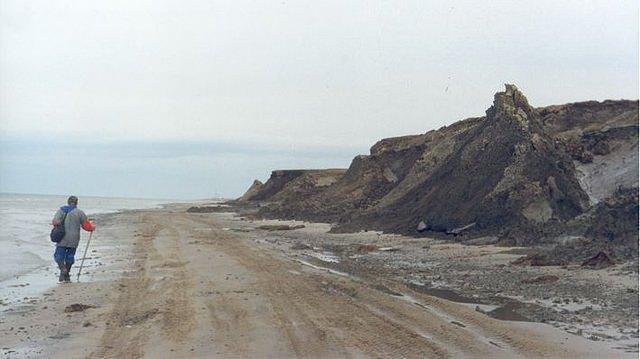
Need proof that global warming is real? Look no further than the Siberian Arctic, say climate scientists. This summer's Siberian heat wave, with temperatures that that could easily rival those found in sunny California, has decimated vast tracks of northern Russia's icy permafrost -- areas that usually stay frozen all year long.
But the loss of that subsurface soil isn't the only thing that is worrying scientists: It's what happens when layers of ice that have entombed corpses for hundreds or thousands of years aren't there any longer.
The most recent damage exposed the 75-year-old corpse of a reindeer riddled with the bacteria known as anthrax. One 5-year-old boy has died and 13 others living in the area were sickened. Researchers believe that the infection was transmitted from the corpse.
It's a scenario that researchers have dreaded considering: What would happen if bodies frozen for decades -- or worse, centuries -- were to come in contact with current populations? Anthrax is an opportunistic bacteria that can lay dormant in frozen tundra. So can the virus variola, which causes smallpox.
Smallpox, once considered one of the most virulent diseases to exist, was eradicated through vaccines some 40 years ago. The United Nations sees that accomplishment as clear evidence that vaccination works.
But thawing of the Arctic's permafrost could resurrect that disease if bodies carrying it were to be exposed to air, and to nearby populations that weren't recently vaccinated. It raises the concern that local communities could one day become the disease vector to an epidemic of smallpox or another high-risk disease.
"Resident indigenous populations of the Arctic are uniquely vulnerable to climate change because of their close relationship with, and dependence on, the land, sea and natural resources for their well-being," noted researchers Alan J. Parkinson and Birgitta Evengard, in their 2009 paper on climate change and human health in Global Health Action. Parkinson is the deputy director of the Centers for Disease Control and Prevention's Arctic Investigations Program. Evengard is a professor and the chief physician with the Department of Clinical Microbiology's division of infectious diseases at Umea University in Sweden. Both have written extensively on Arctic communities, highlighting the vulnerability that global warming poses to those communities and the world as a whole.
Much about the long-range environmental impacts of global warming in regions like the Arctic remains unknown. But it's reasonable to assume that communities, like the reindeer herders who make their living in Siberia's most northern reaches and were exposed to the anthrax, are at increased risk, the authors say
"Damage to the sanitation infrastructure by melting permafrost or flooding may therefore result in increased rates of [hospitalization]," they wrote in their report. And such exposures also mean greater transmission risk for communities in other parts of the world as populations are forced to migrate.
Anthrax outbreaks aren't a new phenomena in Siberia. Shallow burial grounds in eastern Siberia lay testimony to that fact. Over the past two centuries, thousands of reindeer died of anthrax infections. The challenges of digging graves in the almost brick-hard permafrost made it necessary to bury them in shallow graves, Evangard explained. Local communities at the time had no reason to think the corpses would one day be exposed to a warming climate. But, really, neither did the scientific community until recently.
"[Temperatures are] rising about three times faster in the Arctic than in the rest of the world," Evangard told NPR digital editor Michaeleen Doucleff. And that means repeated risk for populations as the temperatures warm.
In 2014, researchers and think tanks got together and formed a circumpolar working group to study and advise on the risks of global warming in the Arctic and other areas under threat from global warming. It comprises public health experts and academic institutions from across the world and joins a network of other specialized groups studying the Arctic. Topics of study include a long and discomforting list of "climate-sensitive" pathogens that may one day pose a greater risk due to global warming.
For now, however, experts are watching to see how well local communities in one of the world's coldest regions are able to deal with record-high temperatures and unforeseen circumstances. An emergency inoculation program has been started for nomads living in the area. Scientists say anthrax infection will likely pose a risk in Siberia for years to come, adding another challenge to living in what was once Mother Nature's best-kept freezer.
Images: 1) Flickr/Irina Kazanskaya; 2) Flickr/Arctic Coastal Dynamics
Jan Lee is a former news editor and award-winning editorial writer whose non-fiction and fiction have been published in the U.S., Canada, Mexico, the U.K. and Australia. Her articles and posts can be found on TriplePundit, JustMeans, and her blog, The Multicultural Jew, as well as other publications. She currently splits her residence between the city of Vancouver, British Columbia and the rural farmlands of Idaho.














